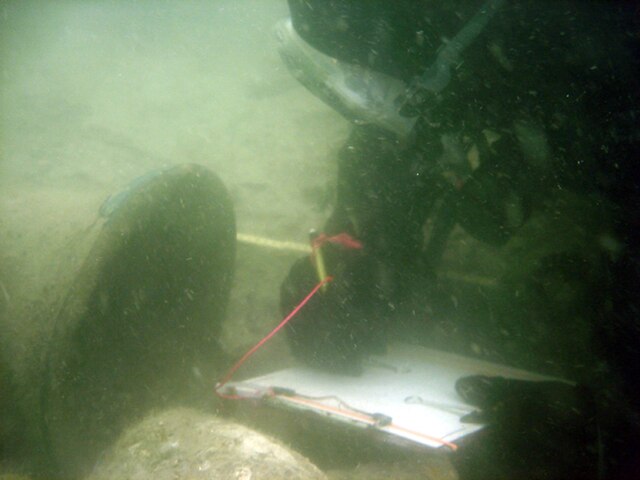A shipwreck is the wreckage of a ship that is located either beached on land or sunken to the bottom of a body of water. Shipwrecking may be intentional or unintentional. There were approximately three million shipwrecks worldwide as of January 1999, according to Angela Croome, a science writer and author who specialized in the history of underwater archaeology.
The shipwreck of SS American Star on the shore of Fuerteventura in 2004
A sonar image of the shipwreck of the Soviet Navy ship Virsaitis in Estonian waters
Johan Christian Dahl: Shipwreck on the Coast of Norway, 1832
Bow of RMS Titanic, first discovered in 1985
Maritime archaeology is a discipline within archaeology as a whole that specifically studies human interaction with the sea, lakes and rivers through the study of associated physical remains, be they vessels, shore-side facilities, port-related structures, cargoes, human remains and submerged landscapes. A specialty within maritime archaeology is nautical archaeology, which studies ship construction and use.
A maritime archaeologist with the Lighthouse Archaeological Maritime Program in St. Augustine, Florida, recording the ship's bell discovered on the 18th century "Storm Wreck."
Submerged bridge under Lake Murray, South Carolina in 160 ft (49 m) of fresh water seen on side-scan sonar imagery using a Humminbird 981c Side Imaging system
The final phases of the salvage of Mary Rose on October 11, 1982.
The bow of Vasa, a Swedish warship that foundered and sank on its maiden voyage in 1628. It was salvaged in 1961 and is now on permanent display at the Vasa Museum in Stockholm.








